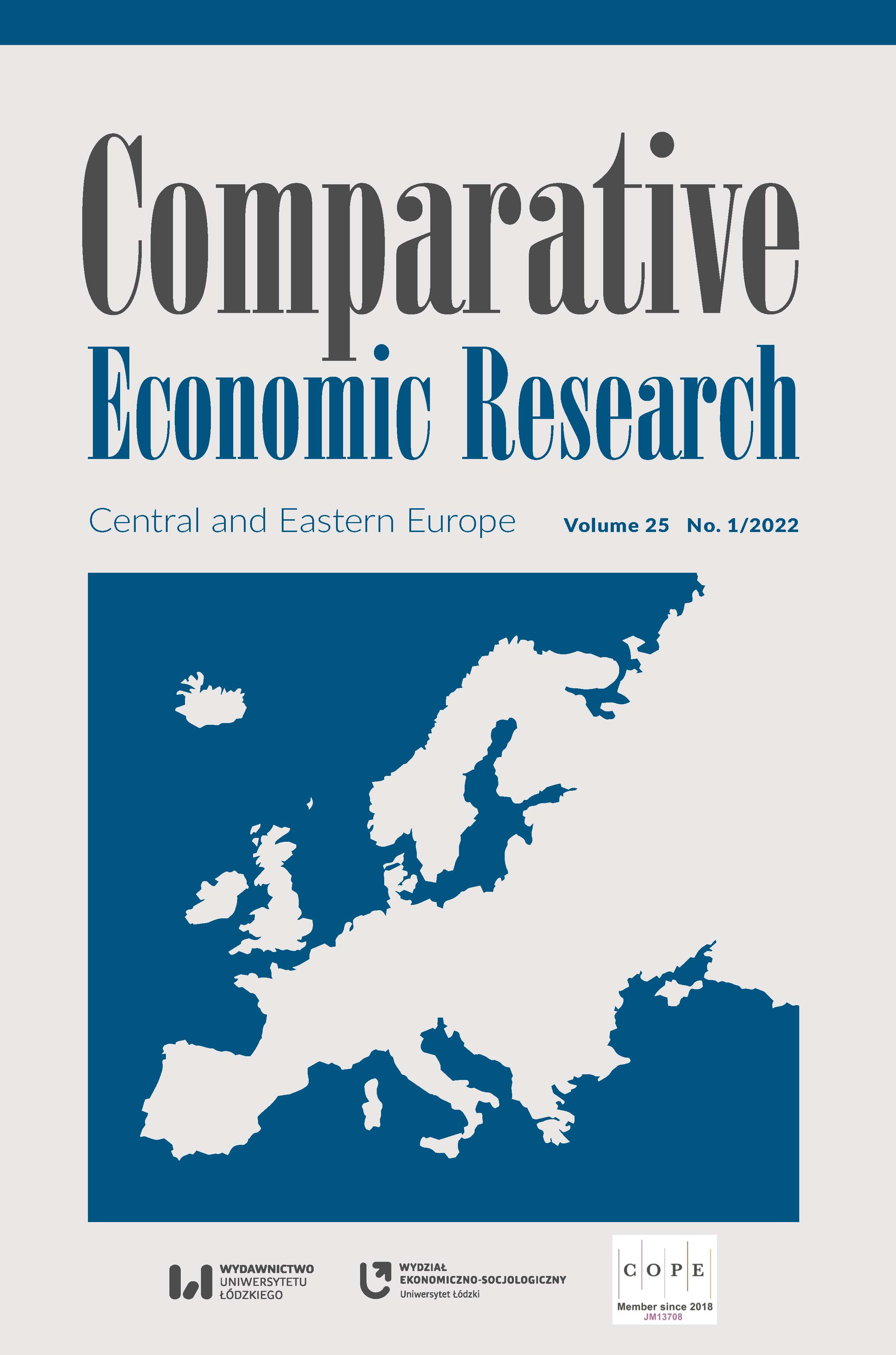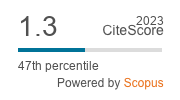Overview of EU and Global Conditions for the Transformation of the TCLF Industry on the Way to a Circular and Digital Economy (Case Studies from Poland)
DOI:
https://doi.org/10.18778/1508-2008.25.05Keywords:
textiles, clothing, leather, footwear, transformation, circular economy, digital economy, European Union, world economy, PolandAbstract
The article aims to review the changes that have taken place in the European and global TCLF (Textiles‑Clothing‑Leather‑Footwear) sector over the last decade from the perspective of new requirements of pursuing a circular and, especially in recent years, a digital economy. The paper describes the changes in the components of this industry (formerly called the light industry) in the European Union and the world economy in the context of sustainable development requirements and the effects of climate change. Recent European and global programs mainly aim to achieve the circular economy’s strict requirements, including reducing pressure on natural resources, to achieve climate neutrality by the end of 2050. This positive change for our planet is also supported by the pursuit of the development of the digital economy.
Downloads
References
Annex to the new Communication from the Commission to the European Parliament, the Council, the European Economic and Social Committee and the Committee of the Regions, Circular Economy Action Plan: For a cleaner and more competitive Europe, Brussels, 11.03.2020, COM (2020) 98 final.
Google Scholar
Clothes and textiles, https://chemicalsinourlife.echa.europa.eu/en/clothes‑and‑textiles (accessed: 11.12.2020).
Google Scholar
Dziuba, R., Jabłońska, M., (2017), Competitiveness of the Textile Sector of Croatia in Trade with the European Union, “Fibres & Textiles in Eastern Europe”, No. 25, 6 (126), pp. 14–18. https://doi.org/10.5604/01.3001.0010.5361
Google Scholar
DOI: https://doi.org/10.5604/01.3001.0010.5361
Ek, M., Chirat, C., Li, D., Iversen, T., Malmström, E., Norström, E., Sixta, H., Testova, L., Wawro, D. (2014), WOBAMA – Wood Based Materials and Fuels, 13th European Workshop on Lignocellulosics and Pulp, June 24–27, Seville.
Google Scholar
European Commission (2020a), A new Circular Economy Action Plan For a cleaner and more competitive Europe, Communication from the Commission to the European Parliament, the Council, the European Economic and Social Committee and the Committee of the Regions, Brussels, 11.03.2020, COM (2020) final, https://eur‑lex.europa.eu/resource.html?uri=cellar:9903b325-6388-11ea‑b735-01aa75ed71a1.0017.02/DOC_1&format=PDF (accessed: 18.12.2021).
Google Scholar
European Commission (2020b), Questions and Answers: A New Circular Economy Action Plan for a Cleaner and More Competitive Europe, Brussels, https://ec.europa.eu/commission/presscorner/detail/en/qanda_20_419 (accessed: 25.09.2019).
Google Scholar
European Commission, Textiles and clothing industries, Brussels, https://ec.europa.eu/growth/sectors/fashion/textiles‑clothing_en (accessed: 26.01.2021).
Google Scholar
European Commission, The EU leather industry, Brussels, https://ec.europa.eu/growth/sectors/fashion/leather/eu‑industry_en (accessed: 26.01.2021).
Google Scholar
European footwear sector: structure, social dialogue, future, http://www.industriall‑europe.eu/SocDial/Foot/2015/AnnualReportFutureFootwear2015‑en.pdf (accessed: 31.12.2020).
Google Scholar
European IPPC Bureau (2013), Best Available Techniques (BAT) reference document for: Leather tanning, Joint Research Center Institute of Perspective Technological Studies, Section “Sustainable Production and Consumption”, Luxemburg, pp. 5–8, https://eippcb.jrc.ec.europa.eu/sites/default/files/2019-11/TAN_Published_def.pdf (accessed: 12.11.2020).
Google Scholar
Główny Urząd Statystyczny (2020), Rocznik Statystyczny Przemysłu 2019, https://stat.gov.pl/obszary‑tematyczne/roczniki‑statystyczne/roczniki‑statystyczne/rocznik‑statystyczny‑przemyslu-2019,5,13.html (accessed: 15.12.2020).
Google Scholar
Kuzmina, O., Sashina, E., Troshenkowa, S., Wawro, D. (2010), Dissolved State of Cellulose in Ionic Liquids – the Impact of Water, “Fibres & Textiles in Eastern Europe”, 18 (3), pp. 32–37.
Google Scholar
Kuzmina, O., Jankowski, S., Fabiańska, A., Sashina, E., Wawro, D. (2014), Preswelling of Cellulose Pulp for Dissolution in Ionic Liquid, “Cellulose Chemistry and Technology”, 48 (1–2), pp. 45–51.
Google Scholar
Ławińska, K., Modrzewski, R., Obraniak, A. (2020), Comparison of Granulation Methods for Tannery Shavings, “Fibres & Textiles in Eastern Europe”, 28, 5 (143), pp. 119–123.
Google Scholar
Ławińska, K., Modrzewski, R., Serweta, W. (2019), Tannery Shavings and Mineral Additives as a Basis of New Composite Materials, “Fibres & Textiles in Eastern Europe”, 27, 5 (137), pp. 89–93, https://doi.org/10.5604/01.3001.0013.2906
Google Scholar
DOI: https://doi.org/10.5604/01.3001.0013.2906
Ławińska, K., Obraniak, A., Modrzewski, R. (2019), Granulation Process of Waste Tanning Shavings, “Fibres & Textiles in Eastern Europe”, 27, 2 (134), pp. 107–110, https://doi.org/10.5604/01.3001.0012.9994
Google Scholar
DOI: https://doi.org/10.5604/01.3001.0012.9994
Ławińska, K., Serweta, W., Modrzewski, R. (2018), Qualitative Evaluation of the Possible Application of Collagen Fibers: Composite Materials with Mineral Fillers as Insoles for Healthy Footwear, “Fibres & Textiles in Eastern Europe”, 26, 5 (131), pp. 81–85, https://doi.org/10.5604/01.3001.0012.2536
Google Scholar
DOI: https://doi.org/10.5604/01.3001.0012.2536
Ławińska, K., Serweta, W., Modrzewski, R. (2019), Badania zdolności oddawania i pochłaniania wody przez kompozyty na bazie strużyn garbarskich i dodatków mineralnych, “Przemysł Chemiczny”, 98 (1), pp. 106–109, https://doi.org/10.15199/62.2019.1.16
Google Scholar
DOI: https://doi.org/10.15199/62.2019.1.16
Ławińska, K., Gendaszewska, D., Grzesiak, E., Jagiełło, J., Obraniak, A. (2017), Zagospodarowanie odpadów garbarskich w nasiennictwie, “Przemysł Chemiczny”, 96 (11), pp. 2344–2347, https://doi.org/10.15199/62.2017.11.24
Google Scholar
DOI: https://doi.org/10.15199/62.2017.11.24
Ławińska, K., Szufa, S., Modrzewski, R., Obraniak, A., Wężyk, T., Rostocki, A., Olejnik, T.P. (2020), Obtaining Granules from Waste Tannery Shavings and Mineral Additives by Wet Pulp Granulation, “Molecules”, 25, https://doi.org/10.3390/molecules25225419
Google Scholar
DOI: https://doi.org/10.3390/molecules25225419
PKO Bank Polski S.A. (2020), Wpływ światowej pandemii koronawirusa na branżę obuwniczą, International Trade Center, Warszawa.
Google Scholar
Report from the Commission to the European Parliament, the Council, the European Economic and Social Committee and the Committee of the Regions on the implementation of the Circular Economy Action Plan, COM(2019) 190 final, Brussels, 4.03.2019.
Google Scholar
Serweta, W., Gajewski, R., Olszewski, P., Zapatero, A., Ławińska, K. (2019), Carbon Footprint of Different Kinds of Footwear – a Comparative Study, “Fibres & Textiles in Eastern Europe”, 27, 5 (137), pp. 94–99, https://doi.org/10.5604/01.3001.0013.2907
Google Scholar
DOI: https://doi.org/10.5604/01.3001.0013.2907
Strobin, G., Wawro, D., Stęplewski, W., Ciechańska, D., Jóźwicka, J., Sobczak, S., Haga, A. (2006), Formation of cellulose/silk‑fibroin blended fibers, “Fibres & Textiles in Eastern Europe”, 14 (4), pp. 32–35.
Google Scholar
The European Skills Council, Textile Clothing Leather & Footwear, http://europeanskillscouncil.t‑c‑l.eu/ (accessed: 12.11.2021).
Google Scholar
UN Environment Programme (2019), UN calls for urgent rethink as resource use skyrockets, https://www.unep.org/news‑and‑stories/press‑release/un‑calls‑urgent‑rethink‑resource‑use‑skyrockets (accessed: 25.03.2019).
Google Scholar
United Nations (2019), 2018 International Trade Statistics Yearbook, Vol. II: Trade by Product, New York, https://unstats.un.org/unsd/publications/catalogue?selectID=3634 (accessed: 13.11.2020).
Google Scholar
Wawro, D., Stęplewski, W. (2010), Producing of Continuous Cellulose Fibers Modified with Plant Proteins, “Fibres & Textiles in Eastern Europe”, 18 (6), pp. 32–38.
Google Scholar
Wawro, D., Stęplewski, W., Bodek, A. (2009), Manufacture of Cellulose Fibres from Alkaline Solutions of Hydrothermally‑Treated Cellulose Pulp, “Fibres & Textiles in Eastern Europe”, 17 (3), pp. 18–22.
Google Scholar
Wawro, D., Hummel, M., Michud, A., Sixta, H. (2014), Strong Cellulosic Film Cast from Ionic Liquid Solutions, “Fibres & Textiles in Eastern Europe”, 22, 3 (105), pp. 35–42.
Google Scholar
Wawro, D., Stęplewski, W., Madaj, W., Michud, A., Hummel, M., Sixta, H. (2015), Impact of Water in the Casting of Cellulosic Film from Ionic Liquid Solutions, “Fibres & Textiles in Eastern Europe”, 23, 4 (112), pp. 25–32.
Google Scholar
Wendler, F., Persin, Z., Stana‑Kleinschek, K., Reischl, M., Ribitsch, V., Bohn, A., Fink, H.‑P., Meister, F. (2010), Polysaccharide Blend Fibers Formed from NaOH, N‑Methylmorpholine‑N‑oxide and 1‑Ethyl–3‑methylimidazolium acetate, “Fibres & Textiles in Eastern Europe”, 2 (79), pp. 21–30.
Google Scholar
DOI: https://doi.org/10.1007/s10570-011-9559-2
Wrzesniewska‑Tosik, K., Wawro, D., Ratajska, M., Stęplewski, W. (2007), Novel biocomposites with feather keratin, “Fibres & Textiles in Eastern Europe”, 15 (5–6), pp. 157–162.
Google Scholar
Wysokińska, Z. (2015), Policy of Active Support for Modern Design and Fashion in the Textile and Clothing Sector and Its Influence on Regional Competitiveness (in the Global, European, and Regional Contexts), “Fibres & Textiles in Eastern Europe”, 23, 6 (114), pp. 14–22.
Google Scholar
DOI: https://doi.org/10.5604/12303666.1167412
Downloads
Published
How to Cite
Issue
Section
License

This work is licensed under a Creative Commons Attribution-NonCommercial-NoDerivatives 4.0 International License.











